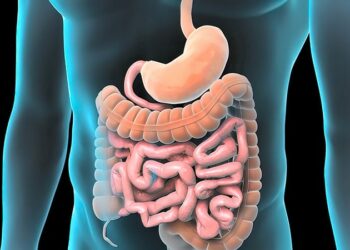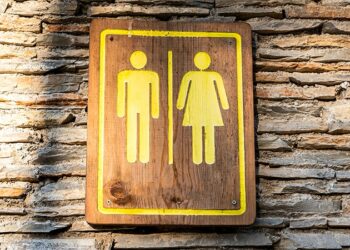Mindfulness meditation appeared to be similar to escitalopram (Lexapro) in reducing anxiety symptoms at 8 weeks based on several patient- and clinician-reported measures, a secondary analysis of a randomized clinical trial showed.
Among 276 adults who underwent mindfulness-based stress reduction (MBSR) or received escitalopram, between-group differences corresponded to small effect sizes (Cohen d ≤0.20), suggesting a lack of clinically meaningful differences in effectiveness between treatments, wrote Elizabeth A. Hoge, MD, of Georgetown University Medical Center in Washington, D.C., and co-authors in a research letter in JAMA Network Open.
“The bottom line is the two treatments were very similar,” Hoge told MedPage Today. “That confirms our first finding, that meditation impacts anxiety pretty much the same as the drug escitalopram.”
The initial study showed that MBSR was noninferior to escitalopram for the primary outcome of anxiety levels assessed by the Clinical Global Impression of Severity scale at 8 weeks (difference -0.07, 95% CI -0.38 to 0.23, P=0.65).
“What’s reassuring is that the data reflect and mirror our previous findings,” Hoge said. “Before we looked at the effects of overall anxiety using a global scale, and now these additional scales and measures and questionnaires … basically all have the same outcome, which is that they’re not different between the two treatment groups.”
In this analysis, the estimated mean differences between the mindfulness meditation and escitalopram groups were nonsignificant for all patient-reported measures at 8 weeks, including the Beck Anxiety Inventory (-0.8, 95% CI -2.7 to 1.1), the Patient-Reported Outcomes Measurement Information System (PROMIS) Anxiety t score (-1.6, 95% CI -3.4 to 0.3), the Penn State Worry Questionnaire (-2.6, 95% CI -5.6 to 0.3), and the PROMIS Depression t score (-1.4, 95% CI -3.5 to 0.7).
The same was true for estimated mean differences in clinician-reported measures, including the Liebowitz Social Anxiety Scale (1.3, 95% CI -5.1 to 7.6), the Panic Disorder Severity Scale (0.5, 95% CI -0.5 to 1.5), and the Structured Interview Guide for the Hamilton Anxiety Scale (-0.2, 95% CI -1.9 to 1.4).
The estimated mean differences in quality-of-life measures were also nonsignificant: the PROMIS Ability to Participate in Social Roles and Activities t score (-0.2, 95% CI -1.5 to 1.2) and the PROMIS Satisfaction With Participation in Social Roles t score (-0.8, 95% CI -2.6 to 1.0).
Hoge also noted that 78.6% of participants in the escitalopram group experienced at least one study-related adverse event compared with 15.4% of those in the mindfulness meditation group (Cohen h = 1.37, 95% CI 0.54-0.7, P
MBSR has a “much lower rate of side effects, so that makes it an attractive choice,” she said.
Virginia Medinilla, MD, PhD, of the Center for Healthy Minds at the University of Wisconsin-Madison, told MedPage Today that these findings legitimize the use of mindfulness interventions “by providing a clear comparison with the gold standard of pharmacological treatment for anxiety disorders, which are medications like escitalopram.”
These findings will hopefully encourage more mental health providers to consider recommending well-researched mindfulness-based interventions, such as MBSR, she said.
“As physicians, we want to make sure the treatments we recommend for our patients have a solid evidence base,” Medinilla noted. “This study adds an important piece to that in the area of anxiety disorders.”
For this secondary analysis, Hoge and colleagues included 276 participants who were diagnosed by a clinician with a primary anxiety disorder — agoraphobia, panic, generalized anxiety disorder, or social anxiety disorder.
Most participants were women (75%), and mean age was 33 years; 60% were white, 19% were Asian, 15% were Black, and 9% were Hispanic. The authors noted that there were no significant between-group differences in demographic characteristics or baseline outcome measures, except for Beck Anxiety Inventory scores.
The participants were randomized 1:1 to MBSR or escitalopram. MBSR involved weekly mindfulness meditation sessions based on MBSR practices, and daily 45-minute meditation sessions at home. The pharmacotherapy group met with providers to receive flexibly dosed escitalopram (10-20 mg daily) at baseline and at weeks 1, 2, 4, 6, 8, and 12.
At week 4, significant differences in PROMIS Anxiety and PROMIS Depression scores emerged, with greater improvement with escitalopram, but were no longer significant at week 8.
The analysis had several limitations, including the fact that noninferiority testing was not feasible with the sample size due to multiple secondary outcomes. The authors also noted that participants in the MBSR group had more face-to-face time with meditation instructors and prescribers.
Disclosures
This study was funded by a grant from the Patient-Centered Outcomes Research Institute (PCORI). The NYU Innovation Fund provided partial funding for study treatments.
Authors reported relationships with PCORI, the NIH, the American Foundation for Suicide Prevention, Ananda Scientific, Cohen Veterans Network, MindMed, Genomind, Cerevel Therapeutics, Wiley, Wolters Kluwer, APA Publishing, G1 Therapeutics, Zentalis, Réseau d’Intérêt Normandie, the University Hospital Center of Caen, and Springer.
Medinilla reported no conflicts of interest.
Primary Source
JAMA Network Open
Source Reference: Hu H, et al “Mindfulness meditation vs escitalopram for treatment of anxiety disorders: secondary analysis of a randomized clinical trial” JAMA Netw Open 2024; DOI: 10.1001/jamanetworkopen.2024.38453.
Source link : https://www.medpagetoday.com/psychiatry/anxietystress/112321
Author :
Publish date : 2024-10-09 17:43:55
Copyright for syndicated content belongs to the linked Source.


![author['full_name']](https://www.newshealth.biz/wp-content/uploads/2024/10/Mindfulness-Meditation-Similar-to-Antidepressant-for-Reducing-Anxiety-Symptoms.jpg)












